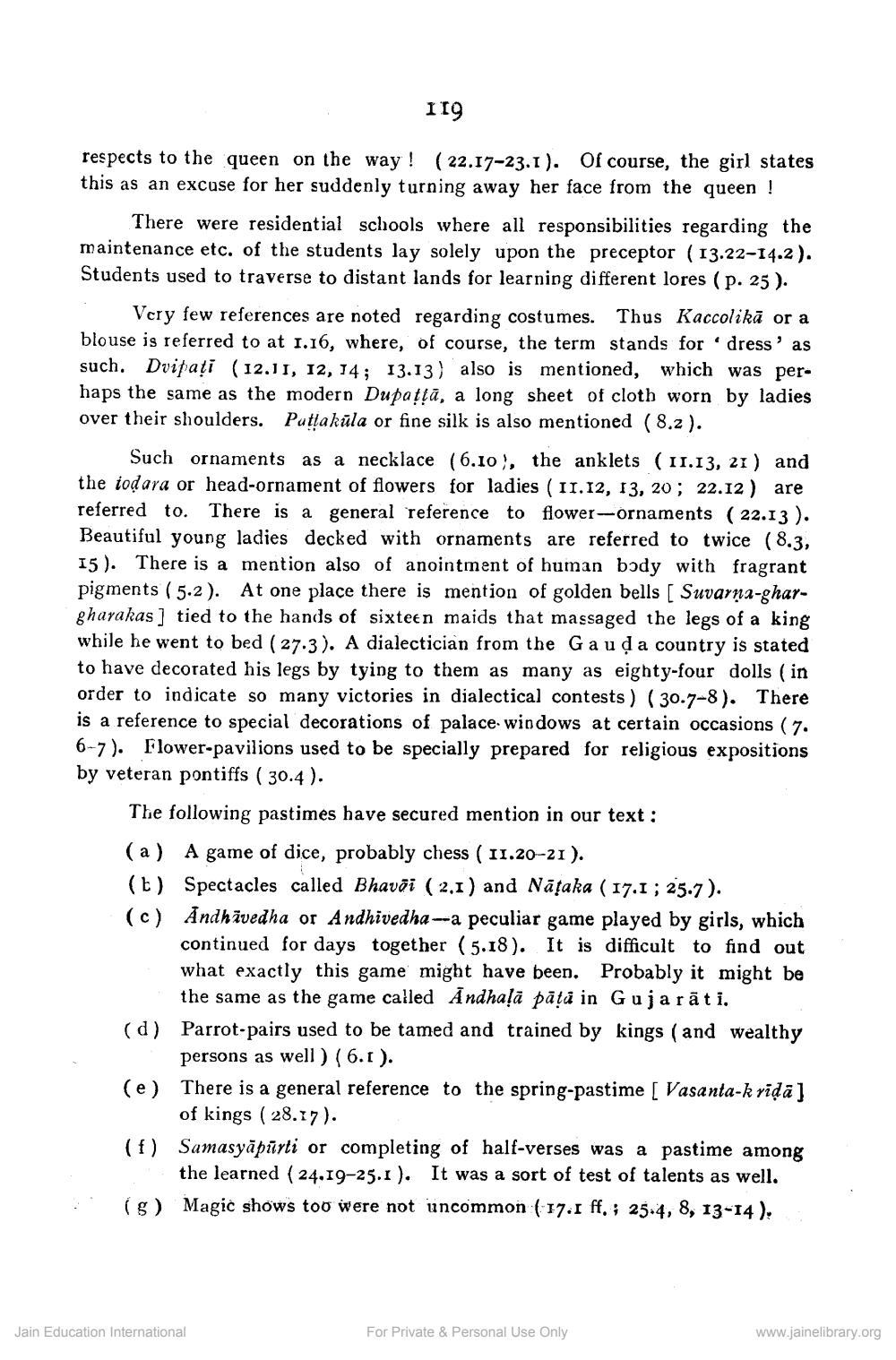________________
119
respects to the queen on the way! (22.17-23.1). Of course, the girl states this as an excuse for her suddenly turning away her face from the queen !
There were residential schools where all responsibilities regarding the maintenance etc. of the students lay solely upon the preceptor (13.22-14.2). Students used to traverse to distant lands for learning different lores (p. 25).
Very few references are noted regarding costumes. Thus Kaccolikā or a blouse is referred to at 1.16, where, of course, the term stands for dress' as such. Dvitați (1211, 12, 14; 13.13) also is mentioned, which was perhaps the same as the modern Dupattā, a long sheet of cloth worn by ladies over their shoulders. Putla küla or fine silk is also mentioned (8.2).
Such ornaments as a necklace (6.10), the anklets (11.13, 21 ) and the todara or head-ornament of flowers for ladies ( 11.12, 13, 20; 22.12 ) are referred to. There is a general reference to flower-ornaments ( 22.13). Beautiful young ladies decked with ornaments are referred to twice (8.3, 15). There is a mention also of anointment of human bɔdy with fragrant pigments (5.2). At one place there is mention of golden bells [ Suvarna-ghargharakas ] tied to the hands of sixteen maids that massaged the legs of a king while he went to bed (27.3). A dialectician from the Gaud a country is stated to have decorated his legs by tying to them as many as eighty-four dolls ( in order to indicate so many victories in dialectical contests ) (30.7-8). There is a reference to special decorations of palace windows at certain occasions ( 7. 6-7). Flower-pavilions used to be specially prepared for religious expositions by veteran pontiffs ( 30.4).
The following pastimes have secured mention in our text:
(a) A game of dice, probably chess ( 11.20-21). (t) Spectacles called Bhavõi ( 2.1) and Nāțaka ( 17.1; 25.7). (c) Andhīvedha or Andhivedha--a peculiar game played by girls, which
continued for days together ( 5.18). It is difficult to find out what exactly this game might have been. Probably it might be
the same as the game called Andhaļā pāțà in Gujarāti. (d) Parrot-pairs used to be tamed and trained by kings (and wealthy
persons as well ) (6.1). (e) There is a general reference to the spring-pastime [ Vasanta-k rida]
of kings ( 28.27). (1) Samasyāpārti or completing of half-verses was a pastime among
the learned ( 24.19-25.1). It was a sort of test of talents as well. (g) Magic shows too were not uncommon ('17.1 ff. ; 25.4, 8, 13-14).
Jain Education International
For Private & Personal Use Only
www.jainelibrary.org




